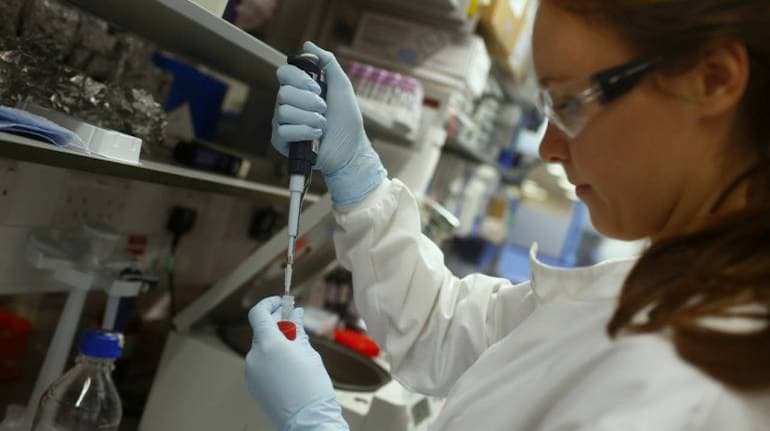The data will be published in British peer-reviewed medical journal the Lancet.
The early-stage human trial data of the COVID-19 vaccine that has been developed in a joint collaboration between Oxford University and British-Swedish drugmaker AstraZeneca will be released on July 20.
The data, which has been widely anticipated, will be published in British peer-reviewed medical journal the Lancet. The Oxford vaccine, also known as ChAdOx1 nCoV-19, was developed by the Jenner Institute and Oxford Vaccine Group, at the University of Oxford.
The vaccine uses a weakened version of chimpanzee adenovirus as a vector, infused with the genetic material of SARS-CoV-2 spike protein.
Adenovirus is a benign virus that causes the common cold, and so the safety of the vaccine is assured. The Chimpanzee adenovirus is used to help circumvent the problem of pre-existing immunity encountered with other human adenovirus vectors.
A vaccine not just protects a person from the disease, but it is considered to be the fastest and surest way to reach herd immunity, where a sufficient percentage of the population becomes immune to a disease. It makes the spread of the disease from person to person unlikely.
What is the significance of the data?
The data related to early-stage trials helps us to gauge two things - safety and efficacy of the vaccine. The efficacy here means whether the vaccine protects people from COVID-19 infection.
The officials who are part of Oxford vaccine said earlier this month that they were encouraged by the immune response they had seen in phase-1 trials.
Media reports say that the vaccine given in two doses provides double protection which means it is capable of producing neutralising antibodies, and also spurs T-Cell, a type of white blood cells called to fight COVID-19.
We may also get comparative data about the neutralising antibodies produced by the vaccine to antibody levels observed in recovered COVID-19 patients. If vaccine-induced antibodies are much higher, it theoretically proves that the vaccine is working. We still don't know how long these antibodies remain in the human body. The data today will help us to get some answers to these questions.
Why does Oxford vaccine generate a lot of interest?
University of Oxford has been working on vaccines on MERS (Middle East Respiratory Syndrome) and Severe Acute Respiratory Syndrome (SARS) diseases, which are caused by coronaviruses.
So, it immediately jumped into the fray to develop a COVID-19 vaccine as soon as it saw the outbreak. This gave it a lead time over other vaccine makers. The potential vaccine is already in large-scale phase III human trials to assess whether it can protect against COVID-19.
In phase-3, it will be tested on roughly 30,000 people in the US alone. AstraZeneca is also in the process of starting the trial in Brazil. As per media reports, David Carpenter, Chairman, Berkshire Research Ethics Committee, which had approved the Oxford vaccine trials hinted that the vaccine could be fairly widely available around September and that is the sort of target they are working on. Except for US biotech Moderna's mRNA vaccine, no other vaccine has come this far.
Relevance to India
In India, AstraZeneca's partner Serum Institute of India will also be initiating the clinical trials soon. Serum will be producing one billion doses for India and other low and middle-income countries. If everything goes as per the plan, the vaccine is supposed to be launched by the end of this year.








